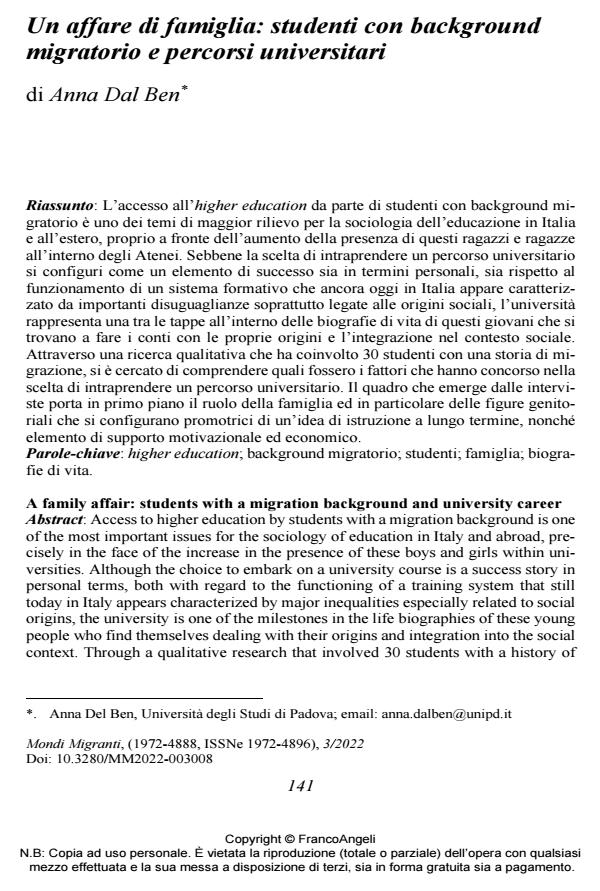A family affair: students with a migration background and university career
Journal title MONDI MIGRANTI
Author/s Anna Dal Ben
Publishing Year 2022 Issue 2022/3
Language Italian Pages 22 P. 141-162 File size 281 KB
DOI 10.3280/MM2022-003008
DOI is like a bar code for intellectual property: to have more infomation
click here
Below, you can see the article first page
If you want to buy this article in PDF format, you can do it, following the instructions to buy download credits

FrancoAngeli is member of Publishers International Linking Association, Inc (PILA), a not-for-profit association which run the CrossRef service enabling links to and from online scholarly content.
Access to higher education by students with a migration background is one of the most important issues for the sociology of education in Italy and abroad, precisely in the face of the increase in the presence of these boys and girls within universities. Although the choice to embark on a university course is a success story in per-sonal terms, both with regard to the functioning of a training system that still today in Italy appears characterized by major inequalities especially related to social ori-gins, the university is one of the milestones in the life biographies of these young people who find themselves dealing with their origins and integration into the social context. Through a qualitative research that involved 30 students with a history of migration, attempts have been made, to understand what were the factors that competed in the choice to undertake a university course. The picture that emerges from the interviews brings to the fore the role of the family and in particular of the parental figures who are the promoters of an idea of long-term education, as well as an element of motivational and economic support.
Keywords: higher education; migration background; students; family; life biog-raphies.
- Storia di Amina. La transizione all'università di una ragazza con background migratorio Marco Romito, in MONDI MIGRANTI 2/2025 pp.123
DOI: 10.3280/MM2025-002006
Anna Dal Ben, Un affare di famiglia: studenti con background migratorio e percorsi universitari in "MONDI MIGRANTI" 3/2022, pp 141-162, DOI: 10.3280/MM2022-003008